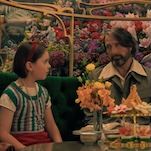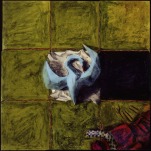There is truth to Mrs. Sweet’s experience. This is the same author who said, “Everything I say is true, and everything I say is not true.” Kincaid draws from personal material, adapting it lyrically—sentences frequently run for more than a page—steeping the novel in the duality of Mrs. Sweet’s love for her husband, and her knowledge that he despises her. Mr. Sweet denigrates his wife in front of their children, making fun of her for arriving in America via a “banana boat”; Kincaid was born in Antigua, though she’s taken great care to note that Mr. Sweet’s behavior should not be attributed to her former husband.
The children are Heracles and Persephone—evidence of the divorce-as-myth guiding principle. Mrs. Sweet has a tough relationship with her daughter, who Kincaid holds at arms’ length until the later stages of the novel; for a while, she’s only a name. Heracles is a problem for Mr. Sweet from the moment he’s born, representing someone who will grow bigger and stronger, and eventually overtake him. Kincaid depicts the father-son relationship as a constant battle the child can’t comprehend or participate in, and Mr. Sweet as an insecure manipulator with a Napoleon complex.
Most frustrating is the sense that Kincaid is far more interested in the effect this particular anti-narrative style has on a familiar story. At times, Kincaid’s deliberately oblique, lyrical approach goes overboard, coming off as long-winded and unnecessarily repetitive. The amount of direct information revealed throughout the novel would take up a single chapter, yet Kincaid stretches the material out, circling back through poetic phrasing again and again, wallowing in Mrs. Sweet’s misery and the dysfunction of a family coming apart at the seams. See Now Then is classical in its movement, interrupting plot for mood setting like a Greek chorus. It’s rhythmic enough to lull readers to sleep. This isn’t Kincaid’s most accessible work, but it does distill divorce into compartmentalized, easily identifiable pain.








































